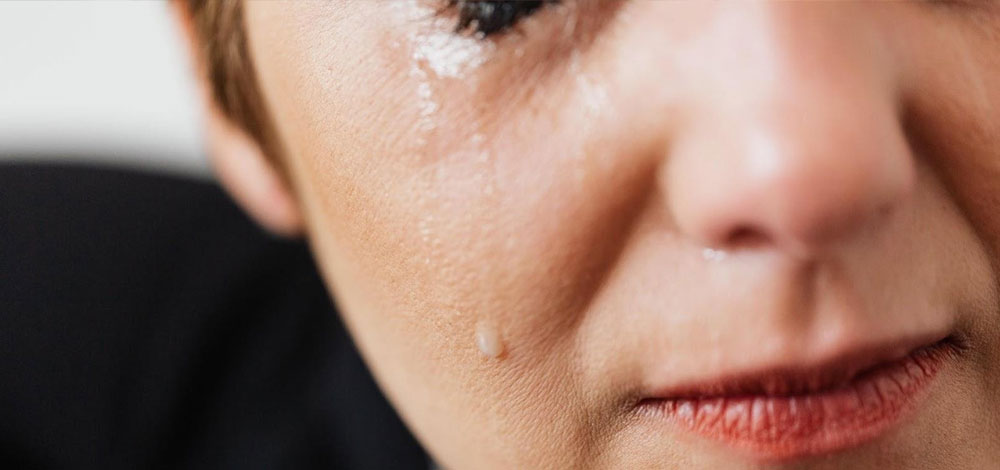
Diseases and issues that affect the eye can be distressing to an individual. Not only do they cause significant discomfort, but they can also impair vision and make one vulnerable to infection. One such eye problem is a blocked tear duct. It can affect an individual at any moment in their life and, in some cases, can be congenital. If it goes untreated, a person’s vision may be at severe risk and require eyelid surgery to reverse the effect. Hence, to help individuals identify the condition and seek early consultation, we will be taking a significant look at this ailment.
What is tear duct obstruction?
It is a condition in which tears cannot normally drain, leaving a person with a watery, irritated eye. It can be caused by either a complete or partial blockage in the tear drainage system.
It occurs commonly in newborns and usually becomes better during the first year of life without any treatment. In adults, the condition can be caused by an infection or injury. The problem can be corrected with relative ease. However, the treatment would depend on the cause and the age of the affected individual.
What are the causes?
Congenital blockage – The obstruction is present from birth. There may be a deformity in the tear drainage system, or it may not be completely developed.
Inflammation or infection – Chronic inflammation or infection in the tear drainage system or around it can cause blockages.
Injury – Bone damage or scarring caused by injuries could result in blockages if it happens near the tear drainage system.
Age-related changes – As a person ages, the openings that drain tears may get narrower, resulting in blockages.
Tumor – If a tumor forms in the nose or near the tear drainage system, it could cause a blockage.
Eye Drops – Eye Drops used to treat glaucoma and other conditions for a long time could lead to a blocked tear duct.
Treatment for cancer – Chemotherapy medication and radiation treatment could cause a blockage in the tear duct.
What are the effects?
- A tear duct blockage can result in the following symptoms.
- Excessive tearing
- Blurry vision
- Redness in the Sclera
- Painful swelling in the inside corners of the eye
- Repeated eye infections or inflammations
- Crusting on the eyelids
- Pus or mucus secretion from the eyelids and eye surface
What are the treatments?
An eye doctor will prescribe treatments to help cure the condition. It could be medication, eye surgeries, or stenting, to name a few. They will carry out several diagnostic tests so they can pinpoint the right cause and effectively treat it.
Dr. Eva Ayala Barroso, a Consultant Ophthalmic and Oculoplastic Surgeon dealing with Oculoplastic Surgery in Dubai at Quironsalud, with nearly three decades of experience in the field of medicine, recommends that treatment is crucial for this condition. She has worked with many patients who had a tear duct blockage, and without timely intervention, the symptoms could progress, leading to a permanent loss of vision. Some of the main forms of treatments are mentioned below.
Watch and monitor developments or provide a massage
It is commonly done with babies. As most infants recover on their own, doctors would recommend monitoring the condition without any action. If there isn’t any sign of improvement, the doctor will teach parents a massaging technique to open the membrane.
Medication for infections
If a doctor believes there is an infection present, they may prescribe antibiotics or eye drops.
Stenting or intubation
A thin tube is threaded through one or both puncta and passed through the tear drainage system into the nose. The tubes are left in for roughly three months before they are removed. Doctors typically carry out the procedure under general anaesthesia.
Balloon catheter dilation
If the above treatments fail to yield results, then this one is used. It’s effective for infants, toddlers, and adults with partial blockage. It is carried out under anaesthesia. The doctor inserts a tube with a balloon at the tip through the tear duct into the nose. They will then inflate and deflate the balloon a couple of times to open the blockage.
Surgery
Dacryocystorhinostomy is the procedure typically carried out to treat blocked tear ducts. It opens the passageway so tears can drain out of the nose. A general or local anaesthetic is always administered. The exact surgical method may vary, depending on the location and extent of the blockage, the surgeon’s preferences, and experience.
Suppose a person suspects they may have this condition. In that case, they need to visit an eye center immediately, so doctors can conduct an examination and begin treatment. Not only would it reduce discomfort, but it will also save their eyesight.

Quirónsalud
Eye Care Dubai
Villa 1187, 304 Wasl Road,Umm Al Sheif District, Dubai, UAE
Phone. +971 4 342 2228
Mobile. +971 50 744 7757
Email. info@quironsalud.ae
Office Hours
9:00 AM to 10:00 PM
Saturday to Thursday